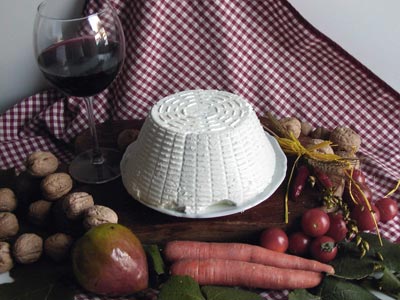 The word “ricotta” comes from the Latin “recoctus”, meaning “cooked again”, and refers to the production method of this dairy product obtained from whey. Greeks and Romans were yet accustomed to this product: Columella describes all production stages in his work “De Re Rustica”. Ricotta is the product of the acidic coagulation of whey. In the Roman territory, it is generally produced from ewe’s milk, but it is also obtained from cow’s, goats’ or water buffalo’s milk. During cheese making, the curd is separated from the whey; the latter is re-heated to 85°C (185°F) so that the seroproteins begin to raise to the surface and form white lumps. In order to avoid granulosity defects, it is important to stop stirring as soon as the seroproteins begin to raise. Once the whole mass has raised, it is collected in moulds and left to drain. Ricotta must be consumed within a few days of production because the high temperature treatment prevents the whey from maturing and ageing. Some producers prolong its life by salting, oven cooking, smoking or spicing.
|


